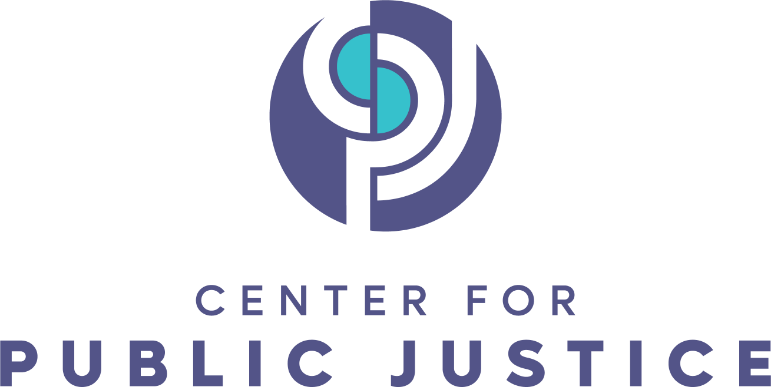
This article is a part of Shared Justice’s Series, Voices of Youth Diversion. This series looks at ways that community organizations, in partnership with state and local governments, are working together to rehabilitate youth and reduce the harmful impacts of youth interaction with the justice system.
THE PROBLEM
At any given time in the United States, some 37,600 youth live in state-run residential facilities for juveniles convicted of crimes. Almost all will be released, and many will be confined once more: on average across states, 55 percent of those released will be rearrested within a year, and 24 percent will be reincarcerated or confined. Like crime across the board, arrests for offenses by juveniles have dropped noticeably in the decades since the mid-1990s. Nevertheless, challenges for juvenile justice systems remain, particularly when it comes to preparing juveniles who have committed serious crimes for reentry into society and reducing recidivism. Laura Fletcher, a volunteer for Epiphany, a Christian ministry serving juvenile offenders in Texas, says “Jesus Christ and his people are a big part of the answer.”
Most states have seen notable declines in youth confinement since 1995. This is partly a result of policy change. For example, Texas law since 2007 has restricted confinement of juveniles in state-run, secure correctional facilities to those committed for felonies and lowered the age of youth that could be confined in state facilities to 19, as opposed to 21. According to Bobbi Kessler, Texas Department of Juvenile Justice (TJJD) Communications Specialist, these changes greatly limited the number of youth in state juvenile justice facilities. The reform reflected the position of youth advocacy organizations such as the Annie E. Casey Foundation that confinement doesn’t necessarily reduce recidivism, instead favoring an approach keeping as many youth as possible out of residential confinement.
For youth who do enter the system and whom the state places in confinement, recidivism is fairly high. According to an annual TJJD report to the Texas Legislative Budget Board, 69 percent of the 3,163 youth leaving a residential placement in 2018 committed a re-offense over the next three years, and 18 percent were recommitted or incarcerated in an adult correctional facility. Twenty-one percent of students exiting a secure residential placement were reincarcerated within one year, and 37 percent were reincarcerated within three years. Seventy-five percent had some sort of re-offense within three years, which could include parole violations, which can be low-level offenses. Still, recidivism remains a challenge.
The state alone cannot address the issues contributing to the violent behaviors of youth landing them in correctional facilities and the recidivism that results when they return to the same social groups and environments where they developed these behaviors. Families, communities and churches all have contributions to make.
A STORY OF REDEMPTION
Edwin Debrow served 28 years in Texas correctional facilities for the murder of a taxi driver named Curtis Edwards when he was 12 years old. Debrow, who had become known as the “Baby Gangsta,” in the east side inner city community of San Antonio where he grew up, witnessed frequent violence, drug use and disorder from a young age. While he notes that he had a sense of what was right and wrong — or at least of what kind of behavior would draw a beating from his mother — he says didn’t didn’t have the wherewithal to understand the long term consequences of his action on September 21, 1991 that landed him in jail and ultimately prison for decades. Debrow’s story, which journalist Skip Hollandsworth has covered in Texas Monthly, illustrates both the fallenness that results in youth violence and problems in the correctional system, as well as the possibility of redemption and change for youth who commit violent crimes.
According to Debrow, the state-run correctional facilities for youth where he resided, particularly the West Texas State School in in Pyote, shut down in 2010, were violent and corrupt, with staff encouraging youth to beat badly behaved kids and engaging in sexual misconduct. While some staff genuinely cared for the kids, there was little opportunity for residents to learn about themselves and improve their behavior. When he went to adult prisons, Debrow said staff treated inmates like trash, dehumanized them and beat them.
As Debrow matured, he changed from a person who liked to fight and continually defied authority to someone who acted rationally and conducted himself with more consideration for others. The change came from some of his own growth, reading and discussions with older inmates, but also contact with people on the outside, teachers and supporters who maintained a relationship with him. “I think some of these people probably should have gave up on me [sic] in my earlier years, when I was, you know, a knucklehead, but they didn’t, you know, they stuck it out with me,” he said. These supporters bluntly told Debrow he needed to change and stay focused if he wanted his life to take a turn for the better. “At the end of the day, they let me know that they were on my side and they were there for me. That made a huge difference in my life.”
Debrow credits volunteers, chaplains, filmmakers and others who believed that he could change and poured into him. Prior to his release, at the Vance Unit in Fort Bend County, he participated in the InnerChange Freedom Initiative of Prison Fellowship, a Christian organization dedicated to bringing restoration to prisoners’ lives. The volunteers who participated — Debrow explains they are usually there for a reason, some connection of their own to the corrections system — brought honesty and hope that there is something better in life.
Despite a background of violence, anger and pain, Debrow’s story has unfolded in redemption, change and new hope. Debrow believes Texans should pass “second look” legislation and change the way we look at youth who commit crimes, recognizing that troubled kids need intervention before they become entangled in the correctional system. He believes they can change. “There was a sacrifice made for all of us, and I think if we’re able to understand that, then we’re able to also realize that, you know, people deserve a second chance.”
THE TEXAS MODEL
Debrow did not gain the benefit of programs designed to help youth make positive behavioral changes during his time in youth correctional facilities. In his book, Last Chance in Texas: The Redemption of Criminal Youth, journalist John Hubner profiled an innovative program at Giddings State School, one of five state-run, secure residential facilities for youth in Texas. Hubner praised the spiritual focus on redemption in the Capital Offenders Program (COP) at Giddings, which was unique at the time. Youth participating were required to recount their stories, their experiences of trauma and the harm they experienced and caused, to confront the life paths and choices that led them to Giddings. Participants spent time identifying “thinking errors” used to justify continued delinquent behavior. Hubner recounts that, according to the program’s clinical directors, only about five or six percent of the juveniles who come through the program are truly psychopathic and thus unreachable through efforts to inculcate empathy and behavioral change. We should note that, as writer Carrie Fountain pointed out in a review of the book, Hubner was not able to provide statistical evidence for the effectiveness of the program, though anecdotes suggested there were some positive outcomes.
According to Kessler and Youth Experiences Leader Elaine Windberg, a range of programs are available to students at Giddings, which housed 89 youth and employed 221 staff as of August 2022, and other residential facilities, including treatment programs for substance abuse and mental health, crisis stabilization, programs for capital and serious violent offenders, along with treatment programs for sexual behavior problems. Staff are also equipped to provide trauma-informed therapy, along with vocational classes of various kinds. One example of such interactions, similar to the process of sharing life stories in the COP, is “Nurture Groups” in which students share experiences and thoughts with peers and with Juvenile Correctional Officers.
The Texas Model, which the TJJD formally launched in 2019, is a trauma-informed approach to the correctional process for juveniles designed to lead students through the process of behavioral change. In a TJJD video, Dr. Evan Norton, Director of Treatment Services, explains that the model reflects advances in knowledge about the importance of healthy social connections and seeks to provide a path toward behavioral change tailored to each youth. The idea is that students move through stages of resocialization and behavior change, with the understanding that there may be setbacks along the way. Opportunities for repair or rebuilding, rather than immediate demotion to a lower stage, are a part of the program. Staff attempt to provide incentives for positive behavioral change, and students’ behavior can affect the length of students’ stay at a facility and their disposition upon release. The model reflects elements of the “Risk, Needs, Responsivity” approach recidivism researchers have promoted. The approach focuses on identifying juveniles most likely to reoffend and focusing on the “dynamic risk factors” contributing to delinquent behaviors. The goal is to be responsive to specific barriers to learning and behavior change and designing interventions that address those barriers. As Evans describes, the approach involves identifying risk factors, such as substance abuse, that lead to antisocial behaviors and protective factors, such as school and church involvement, that lead to healthy connection and prosocial behavior.
The Texas Model aims to incorporate a trauma-informed approach into the programs and services at Giddings State and the other residential facilities. Juveniles who commit the most serious offenses typically suffer from trauma as a result of Adverse Childhood Experiences (ACEs). These include various forms of abuse, neglect, mental health problems and substance abuse in the child’s home. People with ACEs are more likely to commit suicide than those without. Whereas the Centers for Disease Control (CDC) reports that 12.6 percent of the general public has four or more ACEs, about half of the boys in secure residential placements in Texas have four or more, and 87 percent of girls in secure residential placements have four or more, according to the TJJD.
Mental health challenges are common too. At Giddings State, the TJJD estimated that residents with “intense mental health needs,” about 15 percent of the residents accounted for 30 percent of assaultive incidents in fiscal year 2020, from March to July. Finally, many of the residents at Giddings are behind in school, and many also have learning disabilities. Giddings provides onsite educational facilities and services for students to pursue a high school diploma or GED.
Since TJJD formally implemented the Texas Model in 2019, it’s too early to judge the results. They should start to appear in 2023’s annual report, which should include data on recidivism for youth released from residential placements in 2019. This time period will also include the disruptive years of the COVID-19 pandemic and may not provide a good indicator of the effectiveness of the program.
The description of the Texas Model also doesn’t provide the full picture of life at a facility like Giddings State. As Jolie McCullough has reported in The Texas Tribune, a May 2022 TJJD ombudsman report noted that, due to staffing shortages, students at the facility were required to remain locked in their cells for extended periods of time, up to 22 hours in some circumstances. Students in two dorms reported having to use water bottles and trash bags to relieve themselves. The ombudsman report indicates that these incidents resulted in two supervisory staff receiving formal discipline. McCullough also shows that the percentage of committed youth on suicide watch and with self-harm assessments has increased since 2019 (though this may be related to reductions in the total population of youth committed to residential facilities).
TJJD faces a number of challenges related to staffing shortages and disciplinary issues. The federal Department of Justice opened an investigation in October of last year regarding issues of abuse, security and disciplinary procedure at the five secure residential facilities. A May 2022 report based on a review of the Texas Sunset Commission and McCullough’s reporting highlight significant staffing shortages and turnover confront TJJD, especially at the state-run residential facilities. TJJD has responded by increasing salaries by 15 percent for direct-care positions.
HEARTBREAK AND HEALING
A public justice perspective, informed by Christian teaching, helps us recognize that ACEs and the behaviors they can foster result from the fallen state of a world not-yet-redeemed, still abounding in sin and in desperate need of restoration. Further, the public justice perspective suggests that Christians, working alongside other fellow citizens for the common good, can and should be agents of civic and political renewal in the context of such pain-filled lives and situations. Epiphany volunteer and TJJD mentor Laura Fletcher has observed this reality, and adds that students with low IQs, severe learning disabilities or mental health problems face poor interactions with other students. She also notes problems associated with students’ mindsets — “thinking errors,” as they would be called in the original COP. In her estimation, 90 percent of the students she interacts with tell her they don’t believe they will live past 21 years of age. Many have gang affiliations and anger issues that contribute to fighting and other destructive behaviors. All this clearly illustrates the role of community members in helping to connect with youth in these facilities and to provide alternatives to gang membership and destructive behaviors, and to demonstrate to youth who have committed crimes that redemption is possible.
Fletcher and her husband have volunteered in prison ministry for 20 years and with Epiphany and at Giddings State for 10. “What we’ve been blessed to do is see the difference Epiphany makes,” she says. Fletcher participates in Epiphany, a three-day weekend retreat held twice a year with follow up ‘reunions’ held monthly on second Saturdays for students at Giddings State. She has served as a mentor for many students. She especially enjoys working with capital offenders: “The capital offenders are looking for love, respect and acceptance, and these are likely factors in why they offended.”
At the three-day retreats, Epiphany volunteers try to express the love of God, teach students about the possibility of forgiveness, and the opportunity to receive Christ. She says that when volunteers show students love, the intense anger many students carry diminishes. Volunteers offer listening ears; a willingness to play, sing and worship with students; and some consistency to students who have rarely experienced these things in their lives. “It feels to me after all this time that you’re almost replacing a gang,” Fletcher says. “They’re always looking for a gang or a family, and you’re offering them God’s gang. Or a feeling of belonging that they’ve always wanted. And they’ve looked in the wrong places.” Volunteers can also offer ‘handshake’ hugs or one arm hugs, which they only give if a child wants. If a child is resistant, volunteers wait for the children to initiate, to be careful about appropriate, safe touch with the students. Fletcher says that when a child is ready to receive a hug, “It’s like something melts inside them.” She explains that Epiphany volunteers and mentoring volunteers are active on and off the campus throughout the year at other events like Family Day, sports, graduations and Christmas parties. Fletcher says every child is able to feel seen and loved, whether or not they have participated in Epiphany or mentoring.
She explains that receiving forgiveness is hard for children who have experienced trauma and inflicted harm on others. She says students bring up the question of forgiveness for evil acts: “I murdered somebody. Can I be forgiven?” For many, simple gestures of kindness like celebrating a birthday can overwhelm and bring them to tears because they are so far outside students’ experience: “It’s really hard to accept love when all you’ve known is hate or all you’ve known is being used.”
Fletcher emphasizes the importance of insistent and patient acceptance, in addition to accountability, despite the wrong students at facilities like Giddings have committed. She also emphasizes the importance of consistency. A mentor may be the first person to offer a child at a place like Giddings State a relationship with consistency. Fletcher recalls seeing transformation in retreat participants and mentees, but she has also known of students who go on to reoffend and continue down a path of delinquency and gang involvement: “We’ve had our hearts broken. It’s still worth it. These kids are worth it.”
Fletcher also says reentry is an area of significant weakness in the juvenile justice system. Even if staff and volunteers are able to help students change their mindset while they are incarcerated, if they don’t have anything better to go back to on the outside than their old peers and life, students often fall back into their prior patterns. Mentors and volunteers who stay connected after release are crucial. Fletcher also says there is no substitute for a family. Her assessment of the problems of reentry accords with research on incorporating a developmental perspective into criminal justice. Richard L. Bonnie and his co-authors note the significance of a parent or parental figure, a prosocial peer group and activities that contribute to critical thinking and a sense of autonomy for adolescents.
Deanna Luprete, Founding Executive Director of the Epicenter Initiative, also argues that reentry is a major weakness in the system: “These kids are getting stuck in the system because it’s not a complete system; there’s no plan for them when they get out.” Part of the issue, she notes, is that facilities like Giddings State are typically in remote areas, away from family members and community members, making it difficult for students in the facilities to receive community support, even from family.
Like Fletcher, Luprete participates in the mentoring program, paying visits to a 17-year-old youth. “I’m his only visitor. He doesn’t get letters, he doesn’t get visits, he gets nothing. And when I gave him a hug last week, he said, you know, ‘thanks for that, I really needed that’.” Luprete’s vision is for a system that, instead, focuses on rehabilitation during the time youth reside in correctional supervision, and then with connecting them with mentors, opportunities and connections in the community. “These kids are lacking a family, they’re lacking family structure, and so we don’t give them that, we isolate them in a more prison-like structure. But what if we operated at a county level. And what if it was a home environment? And what if we gave them life skills?” she asks. “What if we worked on rehabilitation of the child instead of locking them in a five by seven box, you know for 12 and 15 hours?”
Like Fletcher, Luprete points to faith as a crucial element of healing, redemption, and transformation for youth and adults returning from prison: “I think the common denominator is those that have a firm foundation in their spirituality, in their religion, they are extremely successful coming back to the free world. Those that don’t have that, they really, really struggle. They struggle with hope, they struggle with fears, discouragement, things of that nature.”
The circumstances and choices that result in youth committing violent crimes reflect deep pathologies in families and communities, and the system of corrections is inadequate to solve those problems. Yet, Christians believe in a God of redemption and the possibility of healing even for those who have been hurt and hurt others, even for those who have committed terrible evils. Christians have a duty to those in our communities, to be agents of that redemption. Whether through advocating for just corrections policies or providing a network of support for incarcerated youth, faith-based nonprofits, government, the church and the rest of civil society all have a responsibility and the potential to uphold justice for those who have committed crimes and to find ways to restore youth to their communities. Allowing God to work through his church, through his people, provides a basis for genuine hope. Fletcher maintains that hope for change in the system and in the hearts of youth who have committed violent crimes: “It is possible.”
Ben Peterson is an assistant professor of political science at Abilene Christian University, and Maelene Rosales is a law student at the University of Arizona. In this article, they explore the challenge of responding to youth who have committed violent crimes and the possibility of redemption, with a focus on formal programming and volunteers active in the Texas system of juvenile justice.
Want to get involved?
1. Sign up to receive Shared Justice’s monthly newsletter and stay up to date on the latest content, resources, and highlights.
2. Write for us! To learn more about writing for Shared Justice, email emily.fromke@cpjustice.org.
3. Form a Political Discipleship group to practice meaningful political engagement in your community. The Center for Public Justice’s Political Discipleship is a guide for active Christian citizenship, designed to empower people with skills and tools to shape policy and address inequality and injustice in their communities. To learn more about starting a group, visit our website or contact emily.fromke@cpjustice.org






